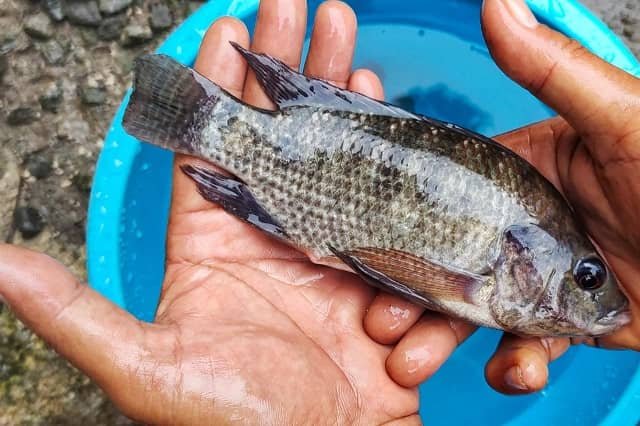
Fish is a vital source of proteins and healthy fats, particularly polyunsaturated omega-3 fatty acids (PUFA). However, farmed tilapia often lacks the healthy omega-3 fatty acids found in wild fish. These essential nutrients are crucial for human health and impact heart health, brain function, and development.
Scientists from Hainan University evaluated how variations in diet lipid sources impact growth, antioxidant index, lipid metabolism, and fatty acid profile of GIFT tilapia.
Lipids: The Engine of Fish Health
Lipids are a vital component of fish feed and play a key role in various functions. They provide energy, transport fat-soluble vitamins, and contribute to growth, reproduction, and overall health. Among these fats, polyunsaturated fatty acids (PUFA) are particularly important.
Long-chain omega-3 polyunsaturated fatty acids (LC-PUFA n-3) are basic components of cell membranes and influence the immune response. On the other hand, LC-PUFA n-6 enhances growth, antioxidant capacity, and regulates inflammation and lipid metabolism.
Replacing Fish Oil
Traditionally, fish oil has been used in aquaculture feeds to maintain healthy omega-3 levels in farmed fish. However, concerns about overfishing and sustainability have driven the search for alternative oil sources.
While it’s possible to substitute part of the fish oil with vegetable oil, it can significantly affect the final omega-3 content in farmed fish. Studies show that replacing a large portion of fish oil can decrease EPA and DHA levels in fish muscle by 30 to 50%. This not only reduces the nutritional value of farmed fish but could also negatively impact consumer perception.
This study investigated the impact of various vegetable oil sources on the fatty acid profile of GIFT tilapia. They tested:
- Corn oil (CO): a common and affordable option but low in omega-3.
- Flaxseed oil (LO): Rich in alpha-linolenic acid (ALA), a precursor to omega-3 that fish can convert into longer-chain omega-3s like EPA and DHA.
- Algae oil (AO): A direct source of DHA, the most sought-after omega-3.
- Mixtures of LO and AO (LA12, LA11, LA21): Combining these oils aims to balance ALA content with DHA availability.
Searching for the Optimal Oil Blend
The omega-3 content of Nile tilapia can vary depending on its diet. The ideal dietary lipid source for tilapia should achieve a balance between growth performance, omega-3 content, and sustainability.
Stay Always Informed
Join our communities to instantly receive the most important news, reports, and analysis from the aquaculture industry.
While an optimal ratio of n-3/n-6 PUFA can improve growth and immune response in some fish species, the ideal ratio varies by fish species. Research suggests that Nile tilapia may have a better ability to convert certain dietary fats into omega-3 compared to other fish.
In this regard, the study found that tilapia fed LO and FO (control) grew faster. While AO offered the highest DHA content, it also caused some stress in fish, indicated by higher levels of malondialdehyde and superoxide dismutase activity.
The results revealed some interesting trade-offs:
- Corn oil and flaxseed oil: While these oils didn’t have a significant impact on weight gain, they also didn’t significantly increase omega-3 levels.
- Algae oil: This source produced the highest levels of docosahexaenoic acid (DHA), a key omega-3 fatty acid. However, it also resulted in higher indicators of cellular stress.
- Mixtures of flaxseed and algae oils: These combinations offered a potential solution. By blending flaxseed oil (low in DHA) with algae oil (high in DHA), researchers were able to increase DHA and eicosapentaenoic acid (EPA), another vital omega-3, in tilapia muscle, potentially mitigating the negative effects observed with pure algae oil.
Improving Omega-3 Production: The Role of Genes
The study also delved into underlying mechanisms. Flaxseed oil seemed to stimulate the expression of crucial genes for omega-3 synthesis in tilapia liver. This suggests that specific vegetable oils can activate the fish’s natural ability to produce these essential fatty acids.
Importance for Fish Farming
Understanding how effectively different fish species convert dietary lipids into omega-3 is crucial for reshaping their fatty acid profile. This research on GIFT tilapia could pave the way for the development of sustainable, omega-3-rich tilapia feeds. By optimizing lipid sources in the diet, we can ensure healthy, nutritious farmed fish while minimizing environmental impact.
Additionally, by carefully selecting and blending oil sources, producers can create a win-win situation: promoting environmentally responsible practices while also offering consumers a more nutritious seafood choice.
However, further research is needed to optimize these findings and ensure the long-term health of farmed fish. Nonetheless, this study represents a significant step forward in creating a more sustainable and health-conscious future for tilapia aquaculture.
The study was funded by the Hainan Provincial Natural Science Foundation of China and the Open Project of the Key Laboratory of Aquatic Animal Nutrition, Jiangsu.
Contact
Chang Xu
School of Marine Biology and Fisheries, Hainan University
Haikou 570228, China
Email: cxu@hainanu.edu.cn
Reference (open access)
Zhenye Liang, Zongzheng Jiang, Sen Wu, Yujia Zhai, Shuqi You, Chang Xu, “Exogenous Fatty Acids Remodel the Muscle Fatty Acids Composition of the GIFT Tilapia (Oreochromis niloticus)“, Aquaculture Research, vol. 2024, Article ID 2715178, 13 pages, 2024. https://doi.org/10.1155/2024/2715178
Editor at the digital magazine AquaHoy. He holds a degree in Aquaculture Biology from the National University of Santa (UNS) and a Master’s degree in Science and Innovation Management from the Polytechnic University of Valencia, with postgraduate diplomas in Business Innovation and Innovation Management. He possesses extensive experience in the aquaculture and fisheries sector, having led the Fisheries Innovation Unit of the National Program for Innovation in Fisheries and Aquaculture (PNIPA). He has served as a senior consultant in technology watch, an innovation project formulator and advisor, and a lecturer at UNS. He is a member of the Peruvian College of Biologists and was recognized by the World Aquaculture Society (WAS) in 2016 for his contribution to aquaculture.




